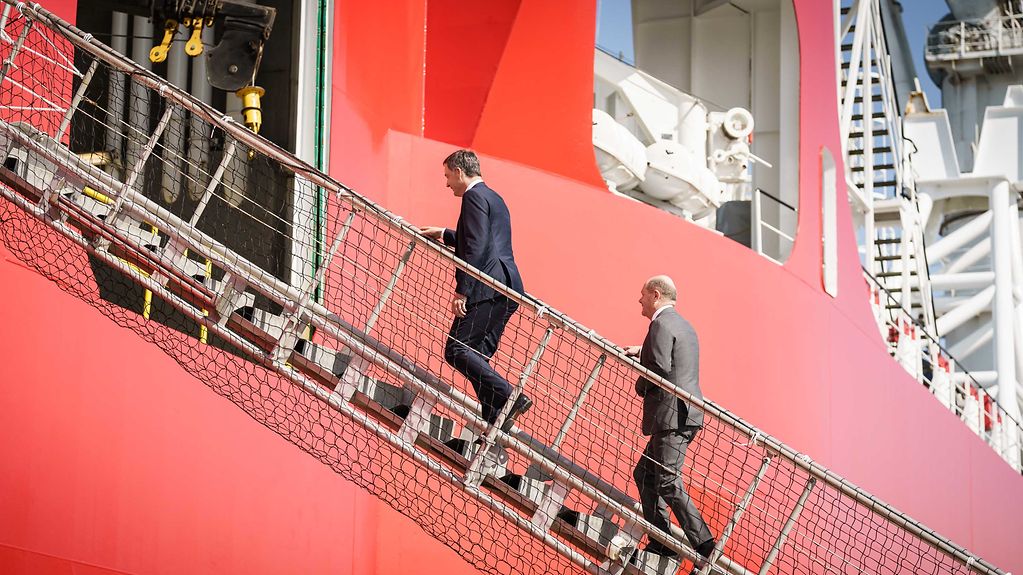Federal Chancellor Scholz at the 2nd North Sea Summit
This will be a major project: offshore wind farms in the North Sea are expected to generate 120 gigawatts of electricity by 2030 and at least 300 gigawatts by 2050. This is the goal being pursued by the nine North Sea states at today's summit in Ostend.
2 Min. Lesedauer

Federal Chancellor Olaf Scholz and the Belgian Prime Minister met with seven other heads of state and government in the Belgian harbour city of Ostend for the 2nd North Sea Summit.
Foto: Federal Government/Denzel
The nine participating countries, meeting in the Belgian coastal town of Ostend, which, in addition to Germany, include Belgium, Denmark, France, the UK, Ireland, Luxembourg, the Netherlands, and Norway, want to push ahead with the expansion of offshore wind energy.
The plan is to make the North Sea into a green energy power plant for Europe. The summit participants have set themselves the goal of making the North Sea Europe's largest energy supplier by 2050, because, as the Federal Chancellor pointed out when he addressed the summit: "These past few months have driven home the message that it is crucial that we collaborate as closely as possible on energy issues in Europe."
The importance of the North Sea as a green energy production site was emphasised in a joint summit declaration. Read the text of the declaration here.
North Sea to become a green energy power plant for Europe
Last year, Denmark, Germany, Belgium, and the Netherlands convened the first North Sea Summit in the Danish port city of Esberg, where they set out their core objectives for offshore wind energy in the Esbjerg Declaration, which laid the groundwork for the development of the North Sea as a green energy power plant for Europe and for making a contribution to climate neutrality and energy security. "Power lines are the lifeblood of Europe. For many years now, we have not only been producing energy for ourselves, but also for our neighbours and vice versa," the Federal Chancellor explained.
In a by-line article issued on behalf of the participating heads of government, Federal Chancellor Scholz announced that collaborative efforts would be bundled and coordinated with a view to expanding offshore wind energy production and installing an offshore electricity grid. According to the article, this would set the course for a green European economy driven by offshore wind turbines.
Achieving climate neutrality with wind power
The goal is to achieve an output of 120 gigawatts by 2030 and at least 300 gigawatts by 2050, which is well beyond the current national production capacities of any of the signatory states. "Our aim is to have a climate-neutral economy by 2045," said Scholz, "by which time we want to be generating our electrical power from wind turbines, solar energy, and biomass, and doing entirely without fossil fuels in order to protect the climate. The potential of offshore wind energy production is immense in this context. And,” he added, “the North Sea is an energy powerhouse virtually on our own doorstep."